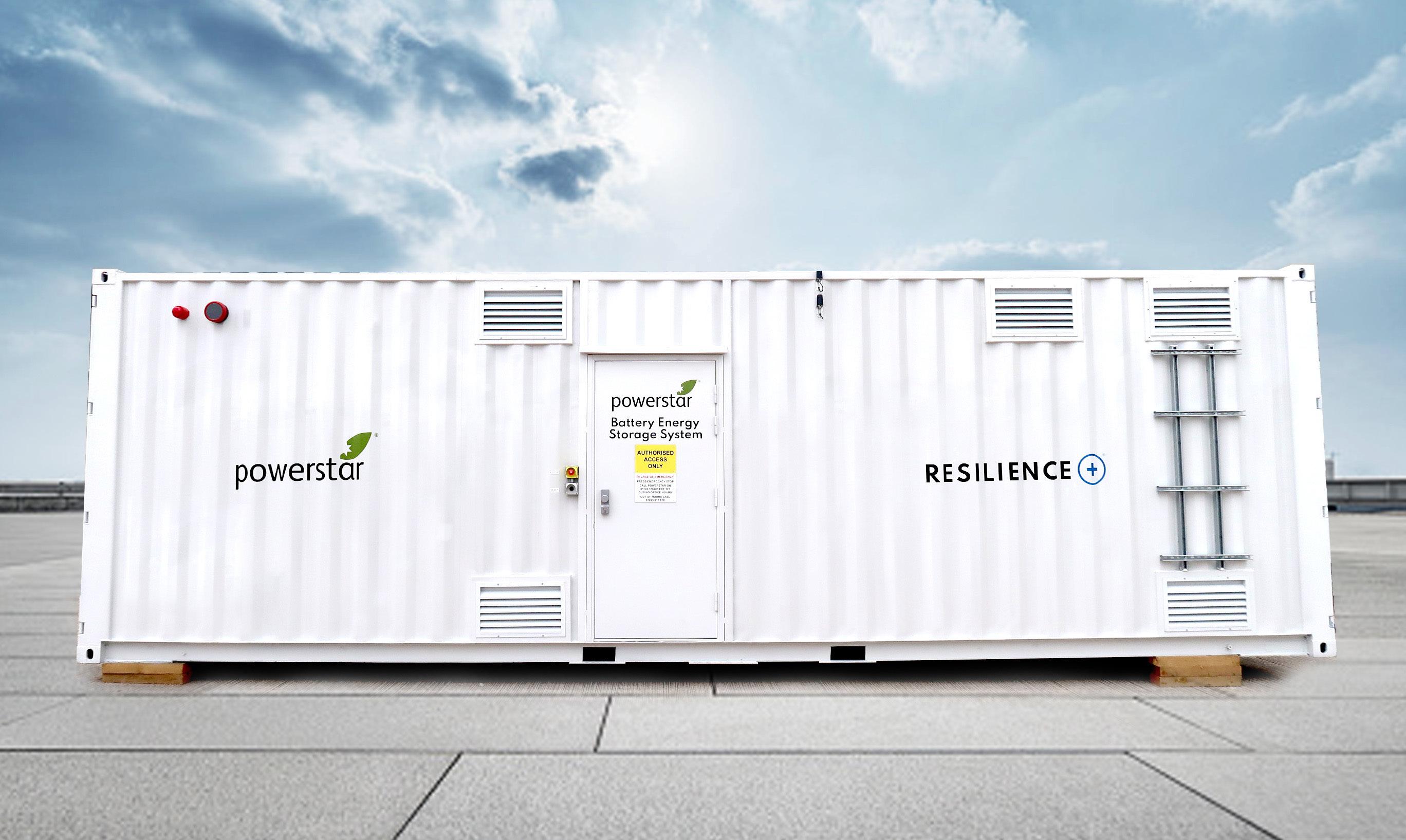
















 By Mike Pedley
By Mike Pedley
























 By Mike Pedley
By Mike Pedley






Welcome to the latest edition of The EMA Magazine, once again we bring you topical contributions and views on key subjects.
The EMA has always been acutely aware of the role, importance and benefits of energy management in organisations. The impact of last year’s energy crisis on energy cost and security brought energy management and its significance to the attention of top management, not for the first time. Two public sector energy management professionals offer insight into how the energy crisis affected energy efficiency and the delivery of carbon reduction targets at their organisations on page 6.
For those concerned with ESOS, on page 10, we bring the latest update on ESOS Phase 3 from the Environment Agency and the Department for Energy Security and Net Zero. Whilst, the official guidance is yet to be published, with 6 months until the Phase 3 deadline, the update is likely to be crucial for informing on the compliance changes relevant to the current phase.
A large proportion of this edition is devoted to energy manager competencies and skills mapping to help those who work or wish to work as energy managers or fulfil a role associated with a delivery of energy and carbon management activities within organisations. The mapping was developed by the EMA Steering Group and can be a valuable resource for professionals and organisational team development. On pages 16-34, we are focusing on knowledge and skills inventory typically required by those with 0-2 years of experience in energy management.
The EMA Energy Management Awards 2023 are now open for entries and an overview of this year’s categories is included on pages 3841. The awards were established 9 years ago with the aim to enable everyone to celebrate their achievements without the need for a budget to enter or attend an awards’ ceremony. A belief with which we continue to deliver the awards to you every year since then. This year we are even introducing two new categories to the list.
And last but not least, an article about 153 years old energy recovery technology that can be used as a step towards a low waste, low carbon future in unexpected places offers the perfect reminder of the need to think outside the box and share such experiences.
We hope you will enjoy this edition and find the articles helpful.
The EMA Team
PUBLISHER
The EMA Magazine is published quarterly by the Energy Managers Association (EMA).


EDITORIAL
The Energy Managers Association
www.theema.org.uk
Tel: 0203 916 5516
CONTACT
Edita Krupova; Editorial Enquiries & EMA Membership Services Manager edita.krupova@theema.org.uk
CONTRIBUTORS:
Paul Graham, Michael Johnson and Mike Pedley
The EMA would like to thank to the above contributors for their time and effort in providing the content and making this issue possible. Their willingness to share experience and knowledge is exemplary and inspiring, and we hope it will encourage others to come forward and contribute in the future.
ADVERTISING SALES
The EMA Team Tel: 0203 916 5516 enquiries@theema.org.uk
ABOUT EMA
The Energy Managers Association (EMA) was set up in February 2012 and represents Energy Managers across all industries. Our priority is to improve the position of energy management experts and their profession and act as their united voice. We aim to develop the skills, knowledge and experience of professionals through our training, high-quality peer to peer guidance and best practice exchange.
@2023 Energy Managers Association, Registered in England and Wales, Company No 7943728, VAT No 151339624, Registered Address: Suite 77, 95 Mortimer Street, London, W1W 7GB.
No part of this publication may be reproduced, stored in, or introduced into a retrieval system, or transmitted in any form or by any means (electronic, mechanical, photocopying, recording, or otherwise) without prior written permission. Any information or material sent by advertisers and contributors, including advice, opinions, drawings and photographs, is the view and the responsibility of those advertisers and contributors, and does not necessarily represent the view of the EMA.
...RELY











ON POWERSTAR

The effect of the energy crisis on energy management saw an increased eagerness for energy efficiency efforts and implementation of renewable electricity generation. Aside from the potential of cutting use of energy and generating onsite, it highlighted the role that those working in the industry so crucially play, and the importance and value they add to organisations and their operations. Two energy management professionals share their views on how the energy crisis affected energy efficiency and the delivery of carbon reduction targets at their organisations.
The NHS has set ambitious targets to reach net zero carbon emissions by 2045 in two stages (2040 for emissions we control, 2045 for emissions we can influence within the supply chain). The current energy crisis has highlighted the need to expand on-site generation, manage costs through controlling demand and recognise the impact of our supply chain, all of which contribute to this agenda.
On-site generation has paid off in big ways over the last year. Both combined heat and power (CHP) systems and on-site renewable electricity generation have become increasingly attractive

as a way to mitigate market price volatility. Most CHP engines run on natural gas so there is still vulnerability to consider as well as the direct carbon emissions produced. However, with the spark gap widening (as it has for our contracts), a new or refurbished CHP at Kingston would pay back in 1-2 years. Kingston Hospital is currently procuring a partner to deliver a low-carbon heating system and low temperature hot water ring to replace our steam pipework. We had also considered decommissioning our CHP early to get ahead of the NHS targets, but it is now likely that we will retain or refurbish our CHP and run it up to 2032 to smooth the cost increase from electricity generated heating. On a more positive note, the solar photovoltaic array we snuck into the roof replacement project for our maternity building is now likely to pay back in 4-5 years rather than the predicted 13-14 years. I hope to see more renewable on-site generation
across the NHS during this period of high prices.
The reduced payback period for energy efficiency projects is also a welcome benefit of the energy crisis. Such projects have been hard for NHS organisations to support due to the constraints on capital funding. The sometimes lengthy returns make packages of efficiency works a hard sell compared to immediate clinical priorities and other essential infrastructure works (whether repairing key equipment that broke or expanding critical services). I hope we will see more efficiency projects getting the go ahead in the coming year. We have included a phase of energy conservation measures in our energy services partnership. These are essential to reach the net zero carbon targets. In an ideal world, we would have reduced our heating demand before replacing the heat generation technology. However, with a hard deadline on the old solution we are making the most of this non-ideal order of
works by seeking to include some efficiency measures in the project. The impact of the energy crisis on our supplier contracts has highlighted which industries are the highest energy users and so most exposed to energy price rises. Some key services have seen price rises of 20% or more year on year and few suppliers were willing to discuss ways we might mitigate this cost pressure. Most of those effected use heat intense processes, so the uplift was driven by the rise in gas rates but some are also transport heavy and responded to the increase in petrol prices. While the initial pain of these cost increases is real, I think it has also helped us to consider which of our suppliers are the worthiest targets for decarbonisation. From April 2023, the NHS requires all contracts worth more than £5m per year to publish a carbon reduction plan which should help put pressure on these larger contributors.
NHS England is working very hard across the sector to help individual organisations to decarbonise well. Tools like the NHS Standard Contract Service Conditions are used to provide direction in which elements of sustainability and carbon reduction to prioritise each year. I find this approach helpful as I try to encourage my Trust to make good decisions in this area and allocate finite resources to deliver them. The Greener NHS teams’
briefings and data collections are making meaningful comparison possible between Trusts on a variety of metrics. The new Net Zero Building standards (published February 2023) introduces definition to what our future estate will look like. To further support us to deliver the NHS targets on time, I would like to see more funding structures that enable retrofit works, especially an easing of the capital rules where there is a clear benefit to the public (e.g. air quality and carbon reduction). The Public Sector Decarbonisation Scheme has helped many organisations to invest, not just in the NHS, but the first come first served delivery makes the choice of projects funded somewhat arbitrary (maybe I’m biased because we were unsuccessful in the Phase 3b round). I’d like to see continued sharing of good examples and learning from less successful ones. This is challenging because no-one wants to admit they made mistakes, but we need good, visible examples of failure to
avoid repeating them.
Author’s profile:
Paul is the Utilities, Waste & Sustainability Manager at Kingston Hospital. He is a member of EMA who has been working in the sector for the last 7 years. He is currently working to set the Trust up for a low-carbon future by transforming how they heat their buildings.

The current increase in pricing has focused public sector minds, but more on the budgetary impact on medium term budgeting and future stages. Rising prices and the tendering of new contracts in our case, have looked at the


potential forecasts for medium term finance planning from stagnate or reducing budgets. This results in more significant projects to reduce consumption and therefore carbon projects are more difficult to propose and win approval. Although with longer term benefits, the initial and capital costs are not readily available.

Funding grants for the public sector are available but have not been very successful for the emergency services for assorted reasons. Unlike education, emergency services do not have ring-fenced funds to bid for. The NHS, including the Ambulance Service, has been more successful due to the size of building and work packages able to meet the criteria. Meeting criteria and being able to meet time constraints on delivery of projects from procurement to completion is challenging. First come, first served has also come in for criticism as many emergency services are under resourced in this area. We have asked as a national group for quality and more even spreading of funding as this would be beneficial. If you did not hit the button in 13 minutes you were too late!!
We have the strategy in place and a longer term plan for new buildings that will have a significant impact on our emissions. Old historical estate is difficult and expensive to bring up to the required standard but fortunately the planning around re-organisation of the estate is already in place.
Nationally, the Fire Service has just published its first national net zero sustainability strategy and toolkit. The Police Service will follow shortly, and this will allow for a wider national approach. This
national approach and clear guidelines is what benefits the NHS and further the Ambulance Service.
But in simple terms, there has not been much change in our progress due to the current energy crisis. We are slowly moving forward, not fast enough, but moving. The optimist says we are moving towards net zero or carbon neutrality. In reality, the speed is not enough, and I think the successful operations benefit from that drive from the top of the organisation.
There is still a gap in senior leadership across organisations in terms of education, the need for dramatic action. Do they fully understand what Zero or Neutrality means, even what it looks like in terms of their business or operation and how to achieve it? Many have knowledge but only some act!
The one benefit is senior people take notice of cost and want to know how to mitigate it and this gives us an opportunity. A big opportunity to demonstrate how to drive down consumption and cost and therefore emissions.
Author’s profile:
Michael has worked with Cheshire Constabulary and Cheshire Fire and Rescue Service for six years now. Previously, he ran his own company after spending 25 years with the Carphone Warehouse plc Group in a range of environmental roles. Michael is a Member of the EMA since the beginning, IEMA, CIWM and chairs the National Emergency Services Environment and Sustainability Group.
JUNE
15-16th Fundamentals of Energy Management
30th Essential HVAC Control and Optimisation
JULY
7th Become an ESOS Lead Assessor
21st Energy Auditing Techniques
SEPTEMBER
7th SECR Compliance
15th Energy Procurement
21-22nd Energy Management in Building Services
29th Net Zero Fundamentals and Strategies
OCTOBER
6th On-Site Electricity Generation
13th Reaching Net Zero
20th Energy Monitoring, Targeting and Validation
In addition to the virtual training courses, the EMA delivers two in-person courses:
• Understanding and Delivering Behavioural Change Programme course
• Turning Data into Energy Savings course
These courses are scheduled on demand and to express your interest, please email jana.skodlova@ theema.org.uk.
For an up-to-date list of all our courses visit our website at www.theema.org.uk
“A huge amount of information on various systems found in building services. Delivered in a nice way where questions were encouraged.”
International BEMS Manager – WeWork
“Excellent knowledge transfer and applicable tools, techniques and methodologies.”
Head of Purchasing & Contracts – Metroline
“Very helpful, targeted and specialised. A big help to my professional development.”
Property Project Manager - Field Studies Council
“Well structured, well-paced, right depth.”
Energy Manager - Tesco Stores Ltd
Whether you are a participating organisation subject to the Energy Savings Opportunity Scheme (ESOS) compliance, an ESOS Lead Assessor, a member of an ESOS assessment team or a professional body with a register of ESOS Lead Assessors, the 5th December 2023 has (no doubt!) been marked in your diary since at least the 6th December 2019.
The time in between the two ESOS notification deadlines has been filled with the BEIS’s consultation on Strengthening the ESOS, with dissecting and discussing the Government’s response to the consultation and waiting for the changes, which as part of the Energy Bill are yet to pass the legislative scrutiny and somewhat clogged up Parliamentary timetable.
With less than six months to the ESOS Phase 3 compliance deadline, a number of key elements, crucial for the ESOS players, require finalisation. The Environment Agency (EA)’s Comply with the ESOS Guidance is in need of an update to reflect the Phase 3 changes, the notification system is being redesigned as we type which means that no notification submissions are possible at present to mention just a few. Undeniably, the missing pieces will fall into place when the regulation completes all the parliamentary stages in both
Houses. Rumours have it, it could be sometime in September or October. So, where does this leave the various ESOS players who rely on guidance to ensure their organisational compliance with Phase 3?
Thankfully, the regulatory approval limbo has been filled with sporadic EA’s Newsletters adding some clarity on what is to come, even if not answering the burning question of ‘When?’. Drawing on the latest (at the time of writing) Newsletter1, let us share with you a summary of the update from the Department for Energy Security and Net Zero (formerly BEIS) on ESOS Phase 3 implementation.
Phase 3 ESOS changes - What are they and do you have to comply with them?
ESOS Participants are still required to comply with Phase 3 of ESOS and Government still intend to make the changes announced in the government response to the ESOS consultation. The changes will be subject to legislative scrutiny and timetable, with the enabling primary legislation (the Energy Bill) currently passing through Parliament. Government will update participants when the Energy Bill has received Royal Assent, and the draft regulations are introduced to ensure there is a reasonable amount of time to meet the new requirements.
The changes set out in the government response for Phase 3 are:
• Requirement for a summary template to include compliance information in the ESOS report
• Requirement to submit additional data in the compliance notification (see Table on the next page)
• Requirement to include an energy intensity metric in ESOS reports
• A change to the de minimis exemption so that participants’ Significant Energy Consumption covers at least 95% of their Total Energy Consumption (as compared to 90% in Phase 2)
• Requirement for ESOS reports to provide more information on next steps for implementing recommendations
• Requirement for participants to set a target or action plan following the Phase 3 compliance deadline, on which they will be required to report against annually
• Requirement to share ESOS reports with subsidiaries
And yes, take these as given and consider them when preparing your ESOS Phase 3 compliance.


Final guidance will be published on GOV.UK once the new ESOS regulations have been laid in Parliament. This will happen after the Energy Bill, which contains the regulation making power, has been passed by Parliament. The Environment Agency / Department for Energy Security and Net Zero (DESNZ) will communicate via newsletters and other communications before final publication of the guidance to make you aware of the changes to the scheme to enable quotations and to allow assessors to carry out assessments before the compliance deadline.
Summary report template for submitting reports to the Environment Agency – THE TEMPLATE that everyone has been after
A table has been provided by the DESNZ and is shared below setting out the information that will need to be notified to comply with the expected Phase 3 requirements, subject to Parliamentary approval of the legislation. The idea is that the listed information will be required to input into the new notification system (when available) and any specified format for providing the information in the table will be finalised and published once the new ESOS regulations are laid. Details will be provided on how to submit the notification on the new digital service currently under development.
1. Responsible undertaking information
Name, address, contact details and company registration number of organisation
relevant trusts
of the responsible undertaking
Reason for qualification in ESOS in Phase 3 (i.e. based on employee numbers, turnover, balance sheet or inclusion in corporate group)
2. Corporate group information
Number of undertakings in the notification
Names and company registration numbers (where applicable) of all undertakings covered by the notification
Details of any agreement to consolidate or disaggregate corporate groups (including franchises) and details of any changes to corporate groups
Additional information on corporate group structure, for exampl e a chart that sets out the structure etc of the group and information on e.g. what type of control
Standard Industrial Classification (SIC) code of other undertakings in the corporate group, where different to the responsible undertaking
3. Responsible officer details
Name, position and contact details (not to be published)
Confirmation that they have reviewed the results of the assessment and that the organisation has met scheme requirements
Confirmation that results of the energy audit or alternative compliance route have been shared with subsidiaries
4. Lead assessor and other assessors
Name of lead assessor (not to be published)
Relevant approved register
Whether the lead assessor is employed by the participant (or participant group)
Names of other personnel who have carried out site visits, gathered data and/or drafted parts of the report (not to be published) and whether they are employed by the par ticipant (or participant group)
5. Use of alternative compliance routes, estimates and sampling
Use of alternative compliance routes, where applicable
Notification of estimates used for calculating energy consumption, where applicable
Notification that the energy audit does not include an analysis based on energy consumption profiles, where applicable
Details of site sampling – number of site visits, proportion of total and rationale for method
6. Energy consumption information
✓
✓
✓
✓
Plus a breakdown in kWh by fuel type and use category (buildings, transport or industrial processes) ✓
Total Energy Consumption (TEC) in kWh
Significant Energy Consumption (SEC) in kWh (based on de minimis of 5%)
Plus a breakdown in kWh by fuel type and use category (buildings, transport or industrial processes)
If ISO 50001 certification is used, an explanation of how certification scope matches (or otherwise) the scope required by the Significant Energy Consu mption and what proportion of the SEC is covered by ISO 50001
An energy intensity ratio (see Q5 above) for each of buildings, transport and industrial processes and information on estimates used
Any additional ratios the organisation elects to include
7. Energy savings opportunities identified
Total estimated energy savings in kWh from energy savings opportunities identified in Phase 3, through the energy audit and/or alternative compliance routes
A breakdown in kWh of the opportuniti es identified by:
• organisation (for group level reports);
• use category (buildings, transport or industrial processes); and
• type of opportunity (data quality, energy management practices, behaviour change interventions, training, controls, zero/low cost measures, short - term investments paying back in 3 years or less, longer term investments paying back in more than 3 years)
Total estimated savings in kWh achieved by the organisation during Phase 3 (i.e. since the previous ESOS compliance deadline)
This can be from opportunities identified through ESOS reports, through alternative compliance methods, or through any other means unrelated to ESOS.

The estimation of energy savings can either be based on the original estimate in the ESO S report or alternative compliance method, on a subsequent more detailed feasibility study, or by a post - hoc analysis of savings achieved. It should be stated which is used.
A breakdown in kWh of the savings achieved by:
• organisation (for group level reports);
• use category (buildings, transport or industrial processes); and
• type of opportunity (data quality, energy management practices, behaviour change interventions, training, controls, zero/low cost measures, short - term investments paying back in 3 years or less, longer term investments paying back in more than 3 years)
8. Implementation considerations and government support
Details of government support received in relation to investments in energy efficiency and/or carbon emissions
Details of implementation considerations (see Q7 above)
✓
✓
✓
9. Historic information from Phase 1 and 2 of ESOS (where the participant was required to comply in these phases)
Total Energy Consumption (TEC) in kWh for each of Phases 1 and 2
Where this is available, broken down by use category (buildings, transport or industrial processes) ✓
Significant Energy Consumption (SEC) in kWh for each of Phases 1 and 2 Where this is available, broken down by use category (buildings, transport or industrial processes) ✓
Total estimated energy savin gs in kWh from energy savings opportunities identified in the ESOS report or alternative compliance method for each of Phases 1 and 2. Where this is available, broken down by use category (buildings, transport or industrial processes)
✓
Where this is available, total energy savings in kWh achieved in each of Phases 1 and 2 ✓
Voluntary additional information to describe any changes to the organisation between Phases 1,2 and 3
Table: The table sets out the information that will need to be notified to comply with the expected Phase 3 requirements. Where kWh is mentioned above, participants can use more other Wh units e.g. MWh, GWh or TWh where appropriate.
Until the Phase 3 requirements have been finalised in legislation and the updated IT system which is currently being developed has been appropriately tested, the Phase 3 notifications cannot be submitted. The notification system will be made available in time to enable participants to meet notification requirements.
Metrics for ESOS reporting and how they relate to metrics required for Streamlined Energy and Carbon Reporting (SECR) The Government Response to the ESOS consultation stated that Government will require ESOS reports to include an overall energy intensity ratio in terms of kWh/m2 for buildings, kWh/unit output for industry and kWh/miles travelled for transport.
• For buildings, the metric should use Gross Internal Area (GIA)
• For transport the metric should use kWh/ person mile for passenger transport and kWh/tonne mile for freight
• For industrial processes the metric should be based on kWh per measure of production output. Use mass (ie KWh/tonne) if possible. Alternatively, if this is not an option you can use volume (ie KWh/ litre) or unit (KWh/unit) whichever is the most relevant to the process
• In addition, please provide a measurement of overall energy intensity in terms of turnover (ie KWh/£)
Government will provide more detailed guidance following legislation. Organisations may choose to provide additional metrics, for example providing a more detailed breakdown by fuel type. Organisations should bear in mind that whatever metric is chosen for Phase 3 should be reported against in future phases, as one of the purposes of the metric is to allow comparisons to be made between phases. If organisations need to use estimates to calculate
metrics (for example to estimate missing floor area data or estimate the energy split between buildings and processes), details should be kept in the evidence pack.
The intensity ratio required for SECR is a similar kind of metric as this compares emissions data with an appropriate business metric or financial indicator, such as square metres of floor space or sales revenue. However, the SECR
This change was set out in the Government Response to the ESOS consultation of 28 July 2022, but the final guidance will not be provided until the Parliamentary process for new ESOS regulations is complete.
When providing information on next steps (referred to as ‘implementation considerations’ in the Table), ESOS reports should cover considerations relating to how the opportunities identified could be implemented. ESOS reports should:
• Provide an indicative programme of options which combines a selection of options recommended in the ESOS report and outlines the combined costs, benefits and payback period for the package
• Suggest appropriate intervention points for any opportunity identified which is not suggested to be implemented immediately. This could be for example when renewing a transport/ equipment lease or when replacing existing equipment
metric relates to greenhouse gas emissions, while the ESOS energy intensity metric would relate to energy consumption.
Changes to the SEC de minimis mean that organisations must calculate areas of SEC that cover at least 95% of a participant’s total energy consumption, rather than 90% as currently referred to in regulation 25 of the current ESOS Regulations. This is to reflect a reduction to the de minimis exemption from 10% to 5%.

• Signpost where buildings covered by the report are also covered by the Minimum Energy Efficiency Standards (MEES) for non-domestic buildings and whether this is relevant to the recommendations in the report (for example where there may be a requirement on landlords to carry out work that would affect a recommendation)
• Provide information on government schemes which could support businesses to implement energy savings opportunities recommended in the report
Where relevant –
• Include information on financing options to implement energy savings opportunities
• Include information on how building, transport or equipment leases can affect an energy savings opportunity identified in the report
• Provide detailed guidance on what actions to take next, where this is useful for the organisation e.g. what type of contractor, and terms of reference, might be required to implement recommendations
This information is expected to be required for both participants that commission energy audits and those that use the alternative compliance routes. For participants using an alternative compliance route that do not have a dedicated ESOS report, this should be recorded in the evidence pack.
The action plan does not need to be completed until after the compliance deadline and is expected to be required by December 2024. The details on how to complete the action plan will be published in final guidance on GOV. UK once the new ESOS regulations have been laid in Parliament in advance of the Phase 3 compliance deadline.
Where an ESOS participant is part of a corporate group, the ‘responsible undertaking’ that is responsible for ESOS compliance for that corporate group will be required to disseminate certain relevant information contained in the ESOS report, or the whole of the report, to subsidiary undertakings within the corporate group
and to report that they have done so. There may be some cases where information in the ESOS report cannot be shared without breach of another legal obligation. Participants should seek their own advice as to whether this is the case and, if so, may be able to redact or summarise parts of the report so as to avoid such breaches.
The information received by the subsidiary in relation to the ESOS report should be at a minimum:
• Details of any site visits, data gathered or energy consumption profiles specifically for that subsidiary
• Relevant energy savings opportunities for that subsidiary, either specifically or as part of a general recommendation across multiple parts of the organisation
• Costs and benefits of such opportunities

• Implementation considerations relevant to those opportunities (as set out in answer to Q8 about next steps)
In the Government Response to the
ESOS consultation it was set out that any net zero reporting would be voluntary for Phase 3. In the response Government outlined the intention to develop a PAS standard to cover the additional net zero requirement that is intended to be introduced for Phase 4 of ESOS and BSI consulted on this standard (PAS 51215-1) from 6 February to 20 March 2023. Using this PAS will not be required for Phase 3, though participants may use it on a voluntary basis.
There is no question about it; the wait for the ESOS changes to go through the Parliamentary scrutiny continues. But while the regulation might be set in stone only a few weeks ahead of the Phase 3 deadline, you can get ready and act now. Read all the available information carefully and prepare your organisation or client thoroughly. For those who have already completed some or all of the work for Phase 3, do revisit it now, you have been equipped with some more detail. Lastly, don’t forget to keep an eye on any further announcements from the Environment Agency and DESNZ.

















3-6
Core Competencies
Technical & Operational
Energy Auditing
Monitoring, Targeting & Validation
Regulation, Compliance and Voluntary Schemes
Carbon Management
Behavioural Change, Motivation, Communication
Energy Management Strategy & Plan
Energy Procurement
Onsite Energy Generation
Project Management
Financial Management / Budgeting
Ancillary Competencies

Water Management
Waste Management
Fuel Efficient Transport
6+ YEARS OF EXPERIENCE
Core Competencies
Technical & Operational
Energy Auditing
Monitoring, Targeting & Validation
Re gulation, Compliance and Voluntary Schemes
Carbon Management
Behavioural Change, Motivation, Communication
Energy Management Strategy & Plan
Energy Procurement
Onsite Energy Generation
Water Management
Project Management
Financial Management / Budgeting
Fuel Efficient Transport
Waste Management
Leadership Leadership


Large businesses are getting good at spotting their waste and minimising it: Reducing it; Recycling it. Yet for many of these, if they are large water users, there may be another waste that they don’t see: the excess water pressure in their pipes…
We are probably all familiar with the concept of hydro-electric generation. We may have seen the large turbine houses by the dams of Scottish lakes or smaller, community scale, units on lakes and rivers. Perhaps you have visited one of the UK’s pumpstorage sites like “electric Mountain” in North Wales… but have you heard about a hydro down a mine, a hydro in a processing plant and even a hydro on a cooling system? All three, and more, are sites benefiting from new developments in hydro-energy-recovery.
Let’s take a brief look at the theory. How much water does a business use when it is operating? Big industrial plants usage can be well into the millions of litres a day (1 million litres per day is just over 10 litres per second). The water often arrives pressurised from a lake or storage pond and then gains further momentum as it flows down and
around the site to the locations where it is needed.
Take a mineral processing plant (this one happens to be in Italy). It uses 150 litres a second when operating. Being mindful of waste, this plant recycles its water in a closed loop cleaning it up and then pumping it back to the start of the cycle. From the last stage of the treatment process there is an 11m drop to get to the storage pond from where
1870 at Cragside in Northumberland, UK, by William Armstrong, a scientist and entrepreneur. Though upgraded and refurbished since, there is still a hydro at Cragside. Hydro-turbines now come in a huge variety of shapes and sizes and are very efficient ways of recovering energy. However, most need to be made to measure which can make them too expensive for most businesses who may want to take steps towards a low waste, low carbon future but still need to keep a close eye on costs.
There are also hydro energy recovery devices that can be bought “off-theshelf”. For example, it has long been known that a pump and motor can, in theory, also work backwards as a turbine and generator. Pumps are widely used and relatively easy to source and maintain.
it is then pumped back. That drop is around 16kW of potential energy (i.e., in a perfect system). The question is: how can that energy be recovered and used in a commercially viable way?
Technically, there are many well established ways of recovering this energy. Small scale, or micro-hydro, has been around for years - 153 years to be precise. The first system was installed in
However, unlike the made-to-measure turbines such as a Pelton, Francis or Kaplan, they have a reputation for often being inefficient in converting the potential energy to electrical energy and for being inflexible for situations where the flow or pressure varies.
Yet, if the right pump can be selected combined with the right controls and right design then much of the energy

can be recovered and used to offset the power needed to be used on site.
Researchers at Trinity College Dublin have since 2010 been studying how to enable pumps-as-turbines to be used efficiently and cost effectively in these energy recovery situations. That learning is feeding through into the wider, commercial world and pumps as turbines are now being used in an increasingly wide variety of energy recovery situations, from water treatment plants to industrial plants and underground mines as well as more traditional settings such as small lakes. Systems using this sort of devices can range from just a few kW to a several hundred depending upon the flow and pressure (drop) available.
Back to the mineral plant in Italy, instead of simply letting the water fall into the pond, a new energy recovery turbine is being installed to generate 11kW of electricity from the flow. That 11 kW will be fed straight into the site’s electricity system where it will help power the pumps that recirculate the same water once it has been cleaned.

Large power companies are very familiar with hydro-generation. One operating in northern Spain operates sites totalling several GW of capacity. Some of its turbines are water-cooled for which it uses water from the reservoir. That cooling water arrives at high pressure which has to be dissipated before use. Whilst the energy dissipated (i.e., lost) from the cooling system seemed tiny compared to that produced by the big turbine, all the big turbine’s electricity was exported at high voltage
and the site still had to import (and pay more per kWh for) low voltage power for the site’s local needs such as lights, heaters, etc. Now, instead of wasting that energy, they have an energy recovery turbine to reduce the pressure of the cooling water and supply power to run their domestic facilities.
Such industrial systems make use of the existing pipe network with usually only small modifications to create space for the turbine and add the valves and bypasses necessary for the particular needs of that site. Good design of such a system is critical especially in this application where if the cooling
this has not been seen as economically viable. One such plant serves the town of Fethard in Ireland. There, the water starts its journey to the customer by being abstracted from a local stream, flowing down a pipe and into a tank at the head of a small treatment works. With a pump-based energy recovery turbine installed just before the water enters the tank, the site has significantly reduced its external electricity needs and providing a rapid return on the investment.
system goes offline then the big (25MW) turbine has to be shutdown. The design must ensure the turbine, generator, control system and the valves in the pipework around the turbine all operate in a way that does not affect the primary function of the water network (in this case, cooling). At this reservoir in Northern Spain, the design (combined with a wet winter!) has ensured the energy recovery turbine has been operational throughout the 2023 winter season.
Water treatment works are places where, by definition, there is plenty of water and often a constant demand for that water. Many already use traditional made-to-measure hydro turbines but for some, particularly smaller, plants
How do these energy recovery solutions compare to other renewable energy investments? Given that most companies are retrofitting this type of solution into their existing pipes, there can be quite an element of variability for the enabling work such as pipe modifications needed to fit in a turbine. The cost per kW may be a little above a similar capacity solar array but, unlike a solar array, these solutions are often generating non-stop around the clock in an industrial setting where water is being used ‘24/7’. So, a 120kW energy recovery hydro working from a constant flow of water could produce similar annual energy as a 1MW solar array in the UK and cost a lot less. As a consequence, payback periods are typically under five years and in some circumstances where existing sites need very little modification, or were installed as part of a new build, payback periods can be as low as one year.
These solutions work best where there is either a large volume of water or a smaller volume but with a large drop to where it is needed. Typically, a site needs at least 10 litres/s and at last a 10m drop, preferably much more of one or both of these. It doesn’t have to be clean water either. If you can pump
whatever type of water you have, then you can probably generate from it given the right conditions. Some industrial waste water for example can have a variety of chemicals in it and be quite acidic or alkaline but this does not stop
each line, up to 22 litres arrives 300m below ground every second whilst they are operating. The pressure is huge at that depth and so they needed a series of pressure reducing valves before using the water. Now, after installing
pressure, or ‘drop’, that you don’t need for your process, are you missing an energy recovery opportunity?
Author’s profile: Mike Pedley is Commercial Director
W O R K S H O P S
The heat pump revolution is under way with the technology being the go-to solution to decarbonise heat This workshop will focus on a ground source heat pump installation project at Electricity North West Limited (ENWL)’s Oldham depot which is helping the company to reduce CO2 emissions and cut energy bills Installed in October 2021, the heat pump has already contributed to a 25% reduction in their site energy use During the session, the distribution network operator’s Net Zero Carbon Manager, Daniel Shanley, will offer an overview of the entire heat pump project from inception to commissioning, cover any practicalities of ongoing operation and discuss any lessons learned since the installation some 20 months ago.

ZOOM
Decarbonisation audit, a fairly recent term in the context of energy management, could complement any energy audit if GHG emissions’ assessment is also the desired outcome in addition to energy uses. This workshop will outline what a decarbonisation audit can look like in an organisation, how to complete it, what typical outcomes and opportunities could be identified and how to establish the right decarbonisation paths to move forward towards the ultimate goal of reaching net zero or carbon neutrality The workshop will conclude with an opportunity to ask questions or discuss your decarbonisation challenges.










